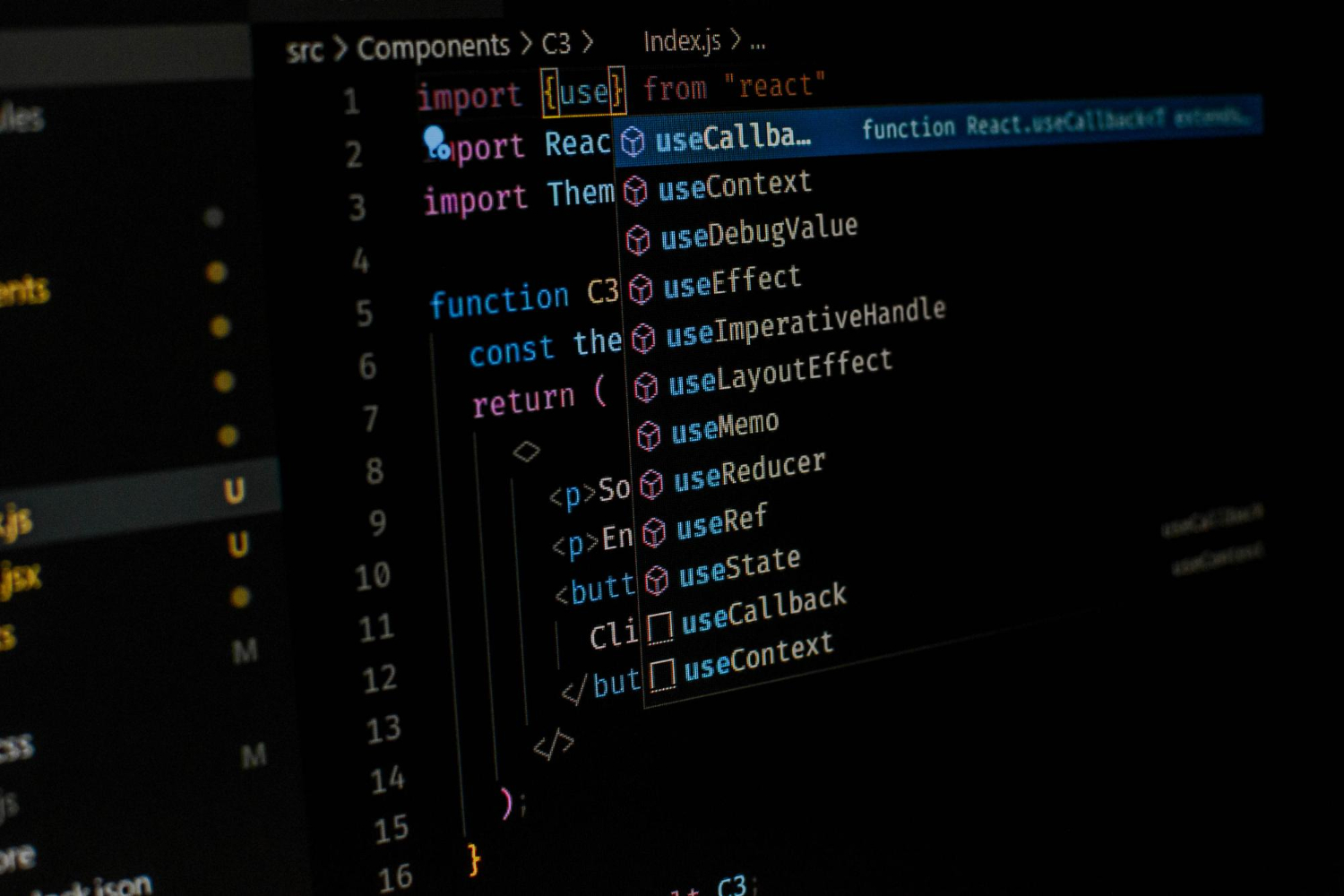A full-stack backend developer is a professional who works on both the server side and the client side of a web application, managing everything from how data is stored and processed on the server to how users interact with the interface. Backend development involves handling databases, server logic, and application architecture, guaranteeing that the backend integrates smoothly with the front end.
In 2024, several backend languages continue to dominate the development world, each offering unique advantages for full-stack developers. Whether you're looking to build powerful APIs, manage databases, or optimize server-side performance, selecting the right backend language is essential for success. Let's explore some of the top backend languages that every full-stack backend developer should consider mastering.

The Connection Between Backend and Full-Stack Development
Back-end development services are essential for building web applications, focusing on the server side, where data is stored, processed, and served to users. Full-stack development combines both backend and frontend development, allowing developers to work on all aspects of an application. A full-stack backend developer is responsible for building and maintaining the backend of an application while also understanding how it integrates with the front end.
The relationship between backend and full-stack development is based on the ability to create and manage the backend systems that power a web application and then connect them to the frontend interface that users interact with. A back-end engineer in a full-stack development role works on both sides of the application, creating a complete solution for users. The back-end development roadmap often includes mastering back-end programming languages and tools that help build efficient and scalable systems while also integrating them with the user-facing parts of the application.
Advantages of Being a Full-Stack Backend Developer
Being a full-stack backend developer offers several benefits:
- Broader Skill Set: Proficiency in both backend and frontend technologies allows for a wider range of development tasks.
- Improved Collaboration: Easier communication with both frontend and backend teams, streamlining project workflows.
- End-to-End Control: Ability to manage both server-side logic and how it integrates with the user interface.
- Career Flexibility: More opportunities in different roles, as you can work on both the backend and front end of an application.
- Problem-Solving Efficiency: A holistic understanding of the full stack helps solve complex issues that involve both sides of the development process.
With the ability to manage both backend systems and their integration with the front end, full-stack developers are well-equipped to handle complex challenges and contribute to all aspects of application development.

Best Backend Languages for Full-Stack Developers
A full-stack developer is skilled in both frontend and backend development. For backend development, it is important to choose the right backend coding languages. These languages allow you to create the server-side parts of an application that handle data and communication with the front end. Whether you are a backend software developer or a full-stack programming expert, finding the best back-end coding language for your projects is essential. Let’s look at the top 5 backend languages to choose in 2024-2025.
1. JavaScript (Node.js)
JavaScript is one of the most popular backend languages used in web development today. It is commonly known for frontend development, but with the help of Node.js development, it has become a powerful language for backend programming as well. Node.js allows JavaScript to run on the server side, which means developers can use the same language for both the front end and the back end of an application. This makes JavaScript a versatile language for full-stack programming, meaning developers can manage all parts of the application using one language.
Pros:
- Versatile: Used for both frontend and backend development, which makes it easier for developers to work on both parts of an application.
- Large community: There is a big community of JavaScript developers, which means there are plenty of tutorials, frameworks, and resources to help.
- Ideal for real-time applications: JavaScript with Node.js is great for creating real-time web applications like chat apps or live notifications.
Cons:
- Performance: JavaScript can be slower for CPU-intensive tasks because it is an interpreted language, not a compiled one.
- Complexity: Sometimes, handling callbacks and asynchronous code can become tricky, leading to what developers call "callback hell."
JavaScript (Node.js) is a popular and versatile choice for full-stack programming, but it may not be the best option for every project. It is great for real-time applications but can face challenges with performance and complex code management.
2. Python
According to statistics, there were 8.2 million Python developers worldwide in 2020. This number has grown significantly, with the figure being much higher in 2024 as Python continues to gain popularity. Thanks to its simple and clear syntax, Python is one of the easiest backend coding languages to learn. This makes it a popular choice for both beginners and experienced developers. Python is used in many fields, including web development, data science, machine learning, and even artificial intelligence. Its simplicity and versatility are the reasons it is often chosen for backend development.
Pros:
- Readable and beginner-friendly: Python is known for its clean and easy-to-read syntax. This makes it a great option for those just starting with backend programming.
- Strong libraries: Python has a wide range of libraries and frameworks, such as Django and Flask, that make building web applications faster and easier. These tools handle many of the complex tasks in web development, saving developers time.
- Flexible for many uses: Python is not just for backend development. It is used in various fields, including web development, data analysis, machine learning, and even artificial intelligence, making it a highly versatile language.
Cons:
- Performance: While Python is easy to use, it can be slower than other compiled languages like Java or Go. This is because Python is an interpreted backend language, meaning it doesn’t run as fast as compiled ones.
- Real-time apps: Python might not be the best option for applications that need to process information in real-time, like video streaming or live data updates. Other languages, such as JavaScript (Node.js) or Go, are often better for real-time processing.
Python is an excellent choice for many types of backend development, especially for beginners. Its readable syntax, strong libraries, and flexibility make it great for building web applications. However, if your application requires very high performance or real-time processing, you might need to consider other languages.

3. Java
Java is considered one of the best backend languages for large-scale, enterprise-level applications. It has been around for many years and is still one of the most used backend languages today. Java is known for its ability to handle high traffic and large amounts of data, which makes it a top choice for businesses that need scalable applications.
Pros:
- Scalable: Java is excellent at handling large applications that deal with lots of data and high numbers of users. It is often used for building systems that need to support heavy traffic, such as banking systems and e-commerce platforms.
- Strong type system: Java is a strongly typed language, meaning that the language checks for errors during development. This helps developers catch mistakes early before they cause problems in the application.
- Sorting Algorithms in Java: One of the key reasons Java is chosen for large applications is its efficient handling of large datasets. Sorting algorithms play a critical role in backend development, especially when dealing with massive volumes of data.
Cons:
- Verbose syntax: Java code tends to be longer and more complicated than other programming languages. This means that developers may need to write more lines of code to accomplish the same tasks, making it harder to manage.
- Learning curve: Java can be more difficult, especially for new developers. Its detailed and structured syntax can be challenging for beginners, which may make it harder for them to get started quickly.
Java's strong type system and enterprise support make it popular for backend development in large companies. However, it can be harder to learn, and the code can be more complicated than in other languages.
4. Ruby (Ruby on Rails)
Ruby is another great backend programming language known for its elegant syntax and simplicity. The Ruby on Rails framework has helped make it one of the best backend languages for rapid development. With its clean and easy-to-understand code, Ruby has become a popular choice for many web developers.
Pros:
- Elegant syntax: Ruby’s syntax is clean and easy to read, which makes it simple for developers to write and understand code quickly. This also helps with teams, as the code is easier to maintain.
- Fast development: The Ruby on Rails framework is designed to help developers build web applications quickly. It includes built-in tools and features that speed up the development process, which makes it a great choice for startups and projects with tight deadlines.
- Active community: Ruby has a strong and active community of developers who help keep the language up to date. They also provide support and share resources, making it easier for new developers to learn and get help when needed.
Cons:
- Performance: Ruby is slower than other languages like Java or Go, especially when handling large amounts of data or high traffic. This can make it less ideal for applications that need to process a lot of information in a short amount of time.
- Popularity: Although Ruby and Ruby on Rails are well-known, they are not as widely used as languages like Python or Java. This means fewer developers may be familiar with Ruby, which could make it harder to find experienced developers for your project.
In summary, Ruby and Ruby on Rails offer a simple, clean syntax and fast development, making them a great choice for many web applications.

5. Go (Golang)
Go, also known as Golang, is the most used backend language created by Google. It was designed to solve scalability and performance problems, making it a popular choice for building modern backend systems.
Pros:
- Efficient and performant: One of the main reasons Go is so popular is that it is designed to be fast. This makes it ideal for building scalable backend systems that need to handle large numbers of users and requests. It works well for applications that require high performance, such as cloud services.
- Simple to learn: Go has a simple syntax and structure, making it easy for new developers to use it. You don’t have to spend much time learning complex features or rules, so it’s a good choice for someone new to backend development.
- Great for large systems: Go is often used to build cloud-based services and microservices. These are systems that require both reliability and speed. With Go, developers can easily create fast services and handle many tasks at once, which is perfect for modern applications.
Cons:
- Smaller community: Even though Go has become more popular in recent years, its community is still smaller than that of other languages like JavaScript or Python. This means it may be harder to find help or resources online.
- Fewer libraries: Go has fewer libraries and frameworks than older languages like Java or Python. While it still has many useful tools, this can make development more challenging, especially for developers who are used to having a wide selection of libraries to choose from.
Each of these languages has its own strengths and weaknesses, making them suitable for different types of projects. Whether you are building a small web application or a large enterprise-level system, choosing the right language for backend development is key to the success of your project. By understanding the best backend language for your needs, you can create high-performing and scalable backend systems that will support your full-stack applications.
The answers to your questions
Is Java a backend language?
Yes, Java is primarily used as a backend language. It is widely used for building large-scale enterprise applications, especially in areas like banking and e-commerce. Java’s strong object-oriented features and scalability make it an excellent choice for backend development.
Is C# a backend language?
Yes, C# is a popular backend language. It is mainly used with the .NET framework for building robust backend systems, particularly in Windows-based environments. C# is widely used for developing web services, APIs, and enterprise applications.
Which backend language should I learn?
The backend language you should learn depends on your goals and the type of projects you're interested in. If you already know frontend development, JavaScript (Node.js) is a great choice since it allows you to work on both the front end and back end. Python is a good option for beginners, with its simple syntax and versatility across many industries. Java is ideal for large-scale enterprise applications that handle heavy traffic and data. If you're focused on building scalable systems and cloud-based apps, Go (Golang) might be the best fit. Ultimately, it’s important to choose a language that aligns with the projects you want to work on.
Is Python a backend language?
Yes, Python is commonly used as a backend language. It is known for its simplicity and readability, making it a great choice for backend development. Python is widely used with frameworks like Django and Flask to build web applications and services.
